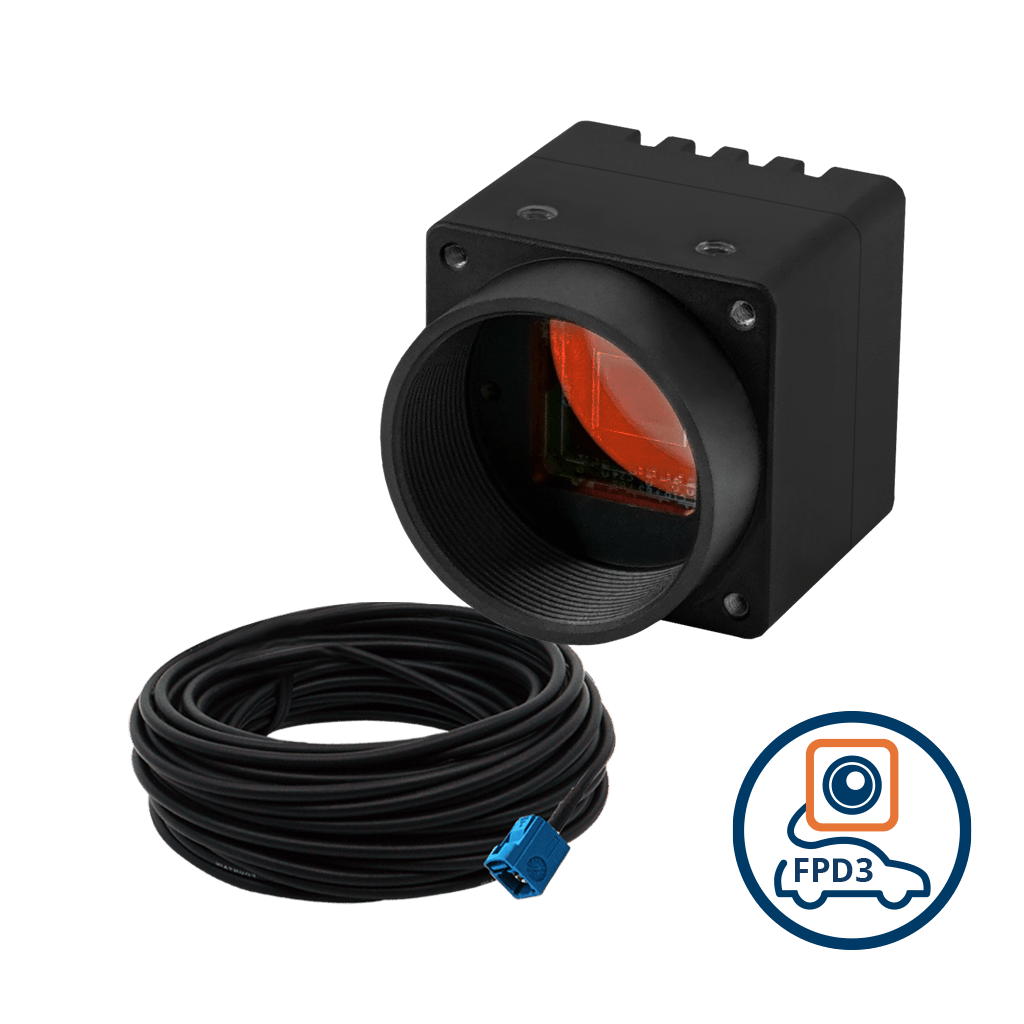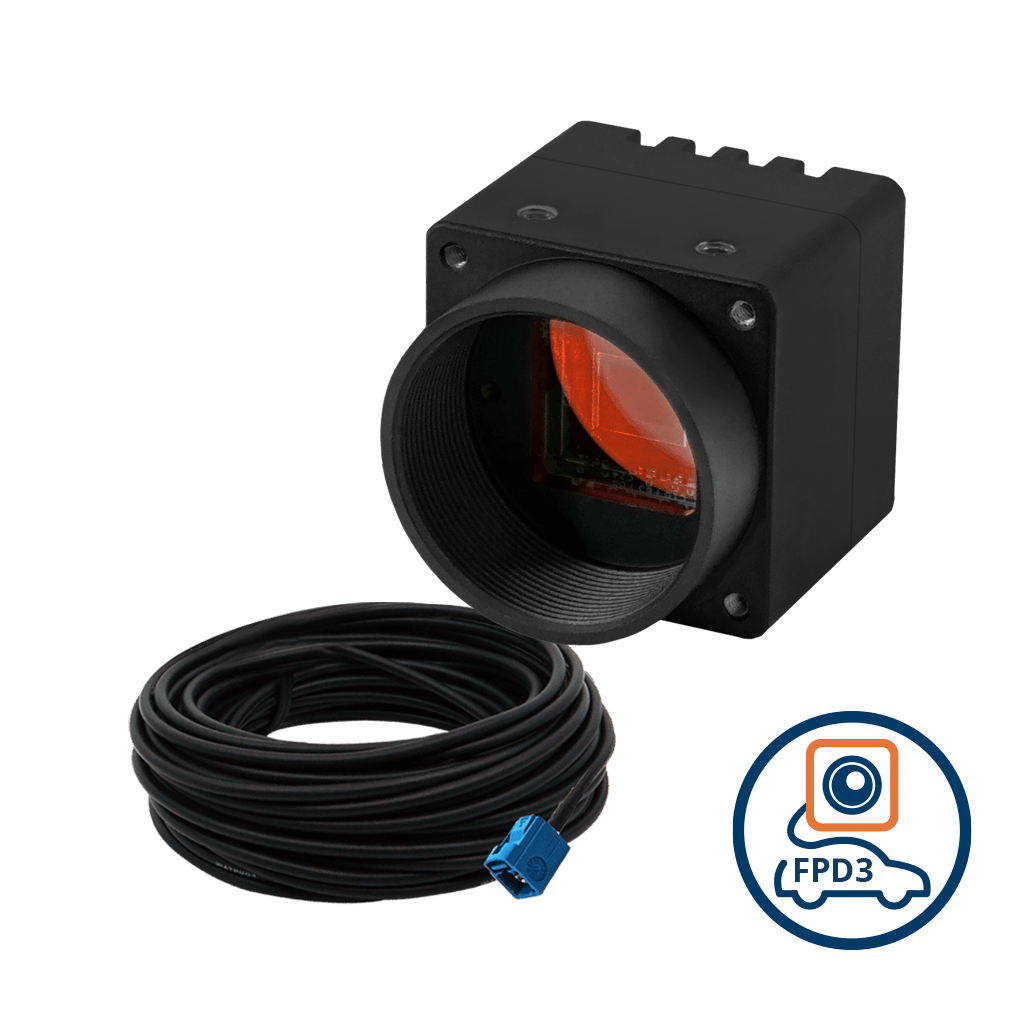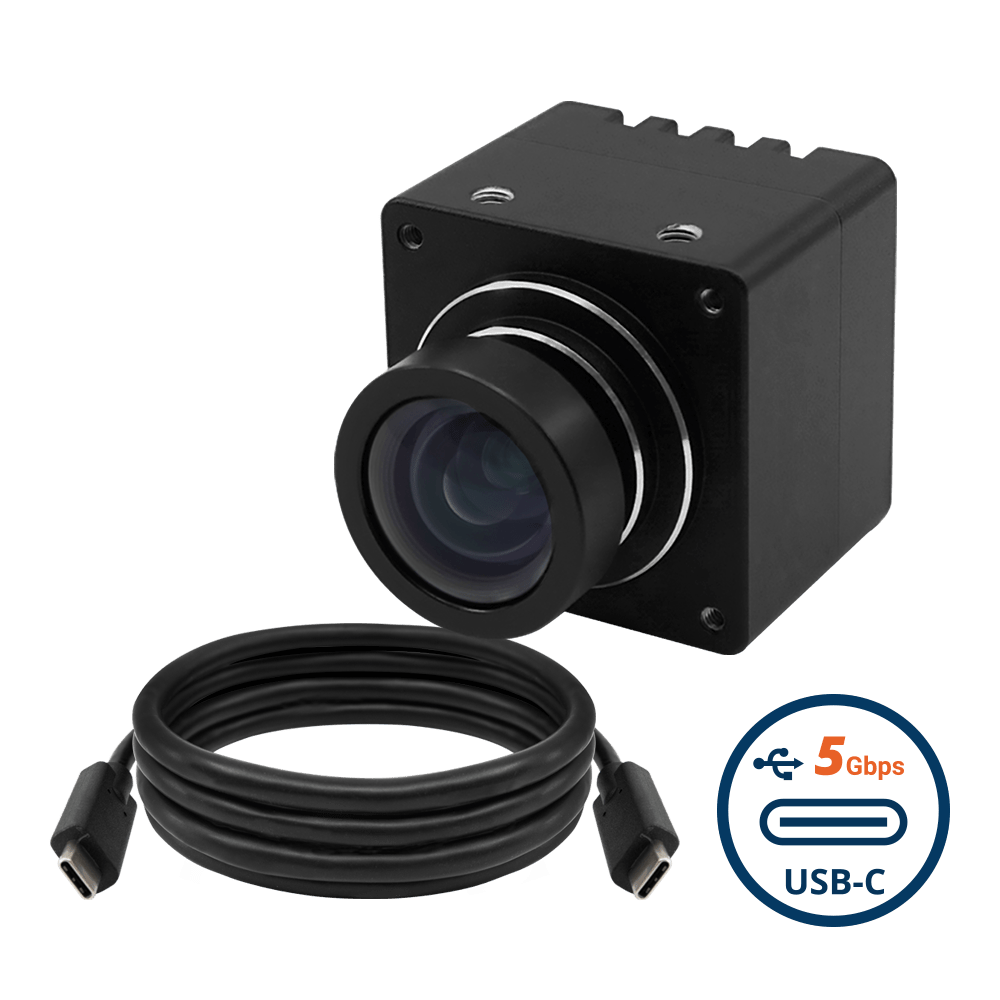With the world returning to frequent travel after the pandemic, airports have started seeing an increase in traffic. Managing passenger check-ins, implementing security guidelines, identity verifications, etc., are some of the daily challenges the airport staff must face. While streamlining done at a process level has helped improve efficiency, many tasks require high levels of human attention and time.
The user experience worsened, caused by inconveniences due to elevated airport traffic and the lack of adequate staff. Given this scenario, airports are under pressure to improve efficiency by automating mundane and transactional tasks.
Recently, embedded vision has risen to help address some of these challenges. From ensuring 24/7 surveillance, to aiding in security check-in and baggage clearance, embedded cameras are now core to various airport automation systems. In this article, we explore how embedded cameras have a huge impact on airport operations.
Camera-based systems used in airports
Embedded vision is a continuously evolving space, with applications in various industries increasing every day. Initially, the use of cameras in airports was limited to surveillance. Today, and in the future, the applications of cameras are far beyond surveillance.
In this article, we will be discussing the following:
- Airport kiosks
- Security check-in
Airport kiosks
Airport kiosks are interactive displays that assist passengers by performing tasks such as printing boarding passes, passenger check-in, luggage tagging, rebooking, and so on. They reduce the dependency on airport staff, helping the airport become more efficient, and improving the user experience while maintaining staffing levels.
Some other advantages of airport kiosks include:
- Improving the travel experience by offering an interactive interface.
- Reducing the time required for passengers to perform their tasks by offering a self-serve method.
- Adding new revenue sources through advertising placements.
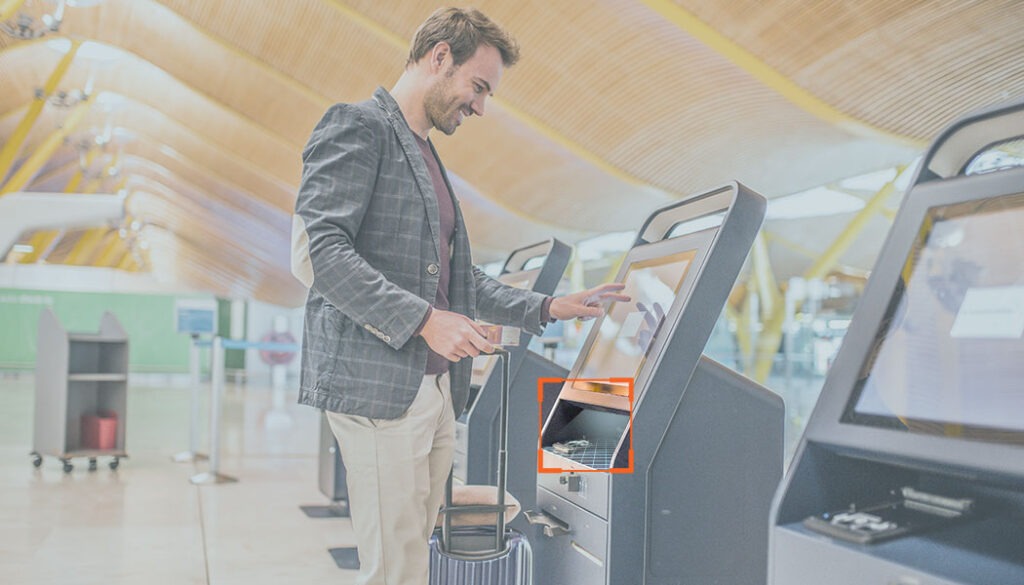
Airport Kiosk
Camera-enabled airport kiosks
While airport kiosks were not initially equipped with cameras, modern-day kiosks used in many airports use cameras to help with the following:
- Biometric identification: Camera-based kiosks are used to identify passengers by leveraging techniques like facial recognition and iris recognition. This data is compared against a database to identify the passenger without having to manually inspect documents.
- Document verification: Manual inspection of documents can lead to time delays and often affects the efficient operation of an airport. Kiosk cameras are used to overcome this challenge where embedded cameras help to capture images of documents like passports, visas, and identity cards. These camera systems come with the OCR (Optical Character Recognition) capability, enabling them to read and interpret text and images on various documents.
- Personalized advertising: One of the game-changers in the offline advertising space is AI-enabled digital signages. They come integrated with cameras that capture images and videos of people passing by. This data is fed to an AI and ML-based algorithm that estimates the demographic characteristics of the person. Based on this, personalized advertisements are shown to them.
- People counting: Camera modules in airport kiosks also help in determining airport traffic using the technique of people counting. The image and video data captured by cameras are analyzed using a computer vision algorithm to accurately determine the number of people.
Requirements of cameras used in airport kiosks
The required features of a camera module used in airport kiosks will vary depending on the end application. The following are the most important of them:
- Near Infrared (NIR) optimization: Capturing the details of the iris cannot be effectively done in the visible region. For this reason, NIR images are used in airport kiosks for biometric identification.
- High dynamic range: High dynamic range is required when the kiosk camera faces varying lighting conditions. For example, if the kiosk is placed facing bright sunlight during the day, an ordinary camera might not suffice.
- High resolution: For the kiosk to be able to capture enough details for functions such as facial recognition and biometric scanning, the camera should have a high resolution. In many cases, a resolution of 5MP should suffice. However, if the vision system demands a higher quality, you can consider going with an 8MP camera.
- Field of view: The working distance in a kiosk is often within 1 meter. This requires the camera module to have a wide enough field of view so that no details of the person standing in front of the kiosk go uncaptured.
- Small form factor: Some kiosks have a compact design and might need a camera that fits into such an architecture.
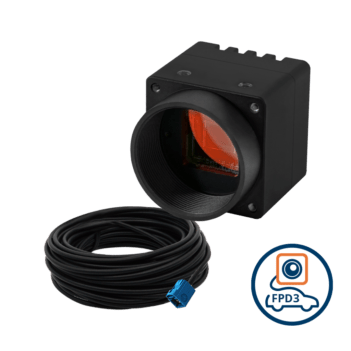
FPD-Link III Aluminium Enclosed Camera with onsemi AR0822 8MP 4K Rolling Shutter with Onboard ISP + IR-Cut Filter with C Mount Body
VLS-FPD3-AR0822-CB
- onsemi AR0822 8MP Rolling Shutter Sensor
- 4K HDR Imaging Capabilities
- Near Infra-Red Enhancement for Outdoor Applications
- Designed for Low Light Applications
- C-Mount for Interchangeable Lenses
- FAKRA Z-Code Automotive Connector
- Plug & Play with Linux OS & Yocto
- VizionViewer™ configuration utility
- VizionSDK for custom development
| Sensor | onsemi AR0822 |
| Shutter | Rolling |
| Megapixels | 8MP |
| Chromaticity | Color, Monochrome |
| Interface | FPD-Link III |
Security Check-in
Security check-in is one of the rising applications of embedded vision in airports. A key task of the airport staff at the security check-in counter is to ensure the luggage tray goes back empty after each use, so that items are not left behind, and to quickly recycle the tray for use by the next passenger.
While this is a very transactional task that doesn’t require complex intelligence, trays are often stacked in bulk, making it difficult to check each one. This encouraged innovators to come up with a solution to automate this process. This is where embedded vision comes into play.
Once a passenger checks out his/her luggage after the security check, the security personnel put the trays into a conveyor belt to be circulated back to the entry point. As the trays pass through an inspection machine, a camera scans the tray to ensure that it is empty. If not, it is sent back to the security staff.
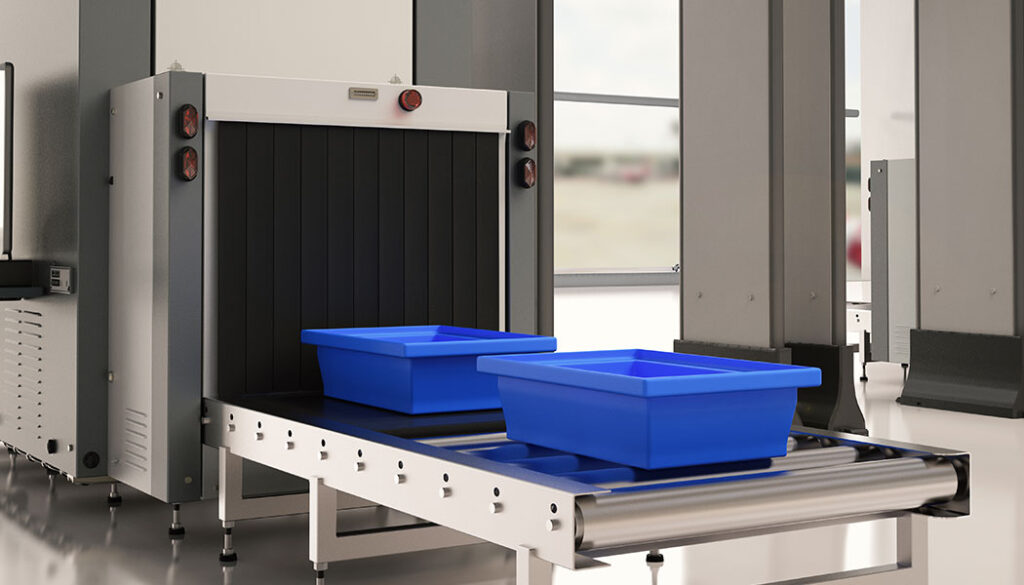
Empty trays on airport scanner machine
Automating this process using cameras offers the following advantages:
- It enables security staff to focus on higher-level security tasks and procedures.
- It prevents misplacement, loss, or theft of items.
This would have been impossible without embedded cameras. This is just another example of how camera modules have contributed to a better standard of life for everyone.
Requirements of a cameras used in security check-in counters
The camera used at the security check-in counter is usually kept above the bottom layer of the conveyor belt so that the trays that return can be monitored. Below are some key features the camera module should possess:
- Low light sensitivity: While airports are always well-lit, adequate light might not reach the inside of the conveyor belt. The camera might require low light sensitivity to ensure quality images.
- Interface support: USB may be the best option since it is plug-and-play and can be easily connected to other computers used at the counter. However, embedded ‘smart’ cameras, with onboard vision and AI processing, may be a better solution for the future.
- Field of view: The working distance in a camera used for tray monitoring is in the range of 30-60 centimeters. Thus, the field of view should be wider than ordinary embedded cameras.
- Resolution: A resolution of 2MP will do the job in systems like these. However, a higher resolution like 5MP can be beneficial.
When choosing an embedded camera for your airport vision system, it is always recommended to evaluate the camera in the device before finalizing it. Every application is different, and a one-size-fits-all approach doesn’t work when it comes to choosing the right embedded cameras. Consulting an imaging expert such as TechNexion is a good idea before you make the final choice.
How TechNexion can help transform airport experiences
TechNexion builds embedded cameras that can be integrated into next-gen vision systems like airport kiosks. With cameras ranging from a resolution of 1MP to 13MP, we have every type of vision solution modern-day smart devices need. Some of the other key features of TechNexion’s camera solutions that can elevate the performance of airport vision systems include:
- Near Infrared optimization
- High dynamic range
- High resolution
- USB 3.1 compatibility
- Excellent low-light performance
We also help our customers smoothly integrate our cameras into their systems. To learn more about our embedded vision solutions, visit this page.

